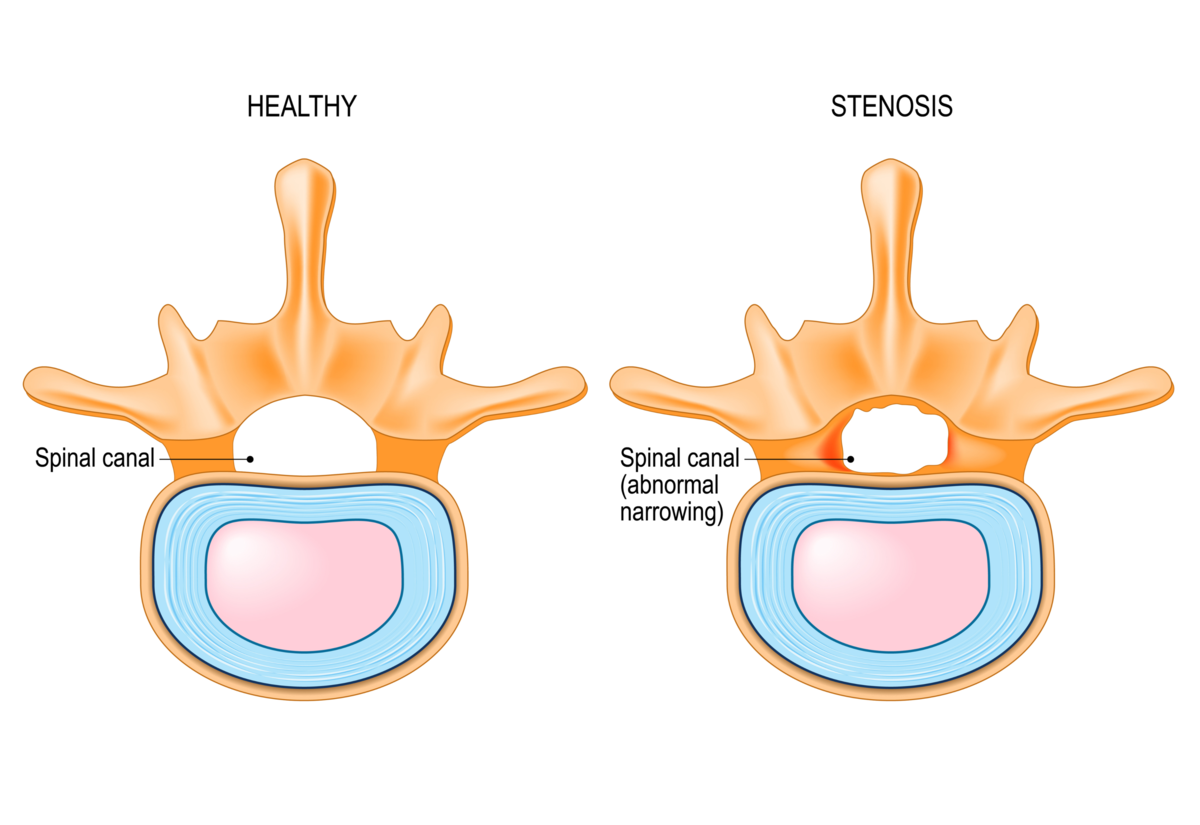Spinal Stenosis
Your spinal canal is a tunnel formed by your vertebrae that contains your spinal cord. Spinal stenosis is the narrowing of the spinal canal. This can cause pressure on your cord itself or on the nerves that go from your spinal cord to your muscles.
Spinal stenosis can occur in the cervical, thoracic or lumbar spine. Cervical refers to the neck, thoracic refers to the mid-back/rib cage area and lumbar refers to the low back.

While some people are born with a smaller spinal canal (known as congenital spinal stenosis), most cases of spinal stenosis occur from herniated discs, bony overgrowth, thickened ligaments, and other spinal injuries. Because the majority of the cases of spinal stenosis occur due to gradual wear and tear, most people who develop spinal stenosis are over the age of 50.
Symptoms of spinal stenosis often start gradually and worsen over time. Cervical stenosis symptoms include numbness or tingling in your hands and arms, weakness in your hands, arms, feet, or legs; neck pain, and problems with walking and balance. Thoracic stenosis symptoms include problems with walking or balance. Lumbar stenosis symptoms include numbness or tingling in your feet or legs, weakness in your feet or legs, back pain, sciatica, and pain in your legs after standing for a long period of time.
Unfortunately, it is impossible to prevent spinal stenosis, but there are steps you can take to lower the risk. These steps include maintaining a healthy body weight, not using any tobacco products, and exercising.
It is also impossible to completely cure spinal stenosis. However, there are methods to treat and manage it. Treatment options for spinal stenosis include medication, physical therapy, spinal injections, and in some cases, surgery.
Learn More About Spinal Stenosis Treatment Options Provided By Hey Clinic
